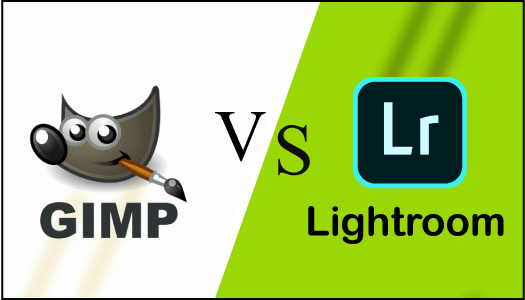GIMP vs. LightroomThe GIMP and Lightroom both are image manipulation software. Both tools are used to edit and create photos and other graphical tasks. Most people prefer GIMP as their favorite image editor, and most people prefer Lightroom as their favorite image editor. In this topic, we will see a comparative overview of GIMP vs. Lightroom and will discuss which one is handy for us by concerning our requirements. 
What is GIMPGIMP stands for GNU Image Manipulation Program, which is the cross-platform image editor software. It is an open-source tool, so we can also make any changes to the source code. It is freely available for multiple platforms. It is available for different operating systems such as GNU/Linux, OS X, Windows, etc. Primarily it is used for photo editing tasks such as Photo retouching, image composition, image editing, and image authoring. But, we can also perform other graphical tasks such as logo designing, artwork creation, web images, etc. It supports various tools to the users to use it as a graphic designing software, photographer, illustrator, and more. GIMP provides several customization options to enhance productivity. Some key features of the GIMP are as following:
Advantages Of Using GIMPThe following are some key advantages of using GIMP: Support for PSD Files: GIMP supports PSD files; we can import and edit Photoshop PSD files on GIMP, including all the layers. Create Your Interface: We can customize the tool tabs of the UI as our need. More than 100 plugins: GIMP is very extensible; we can extend the app functionality using third-party plugins. Work with animations: GIMP supports animations; we can load and save animations using the frame-as-layer format. Consumes low resources: GIMP is lightweight software; it requires fewer system resources than Lightroom. Disadvantages Of Using GIMPLow-quality tool functionality: Some of GIMP's tools and functions is not much useful as Photoshop. For example, The healing tool in Photoshop is more potent than GIMP. Slow development: It's open-source, so the updation and bug fixes got updated later. Limited PSD support: It provides limited support for the PSD files. When we import the PSD files, layers can get distorted. What is LightroomThe Lightroom is an Adobe product that is designed for professional photographers. It is a cloud-based editor that allows us to edit, organize, store and share photos. It facilitates some advanced editing options. It is a paid tool that costs from $10 to $140 depending upon the type of subscription. It is an advanced photo editing tool and getting updated. Several versions of Lightroom are released till now. The latest version 6 provides support for camera and lenses, which makes it more specific. The Lightroom has an excellent user interface and workspace. The Lightroom workspace contains a library and develops a zone for organizing photos and image processing, respectively. Some Key Features of the Lightroom are as following:
It is developed as a RAW file converter, but it supports other popular file formats such as TIFF, JPEG, GIF, PNG and more. It allows us to edit multiple files at once. We can apply editing filters and effects such as exposure, crop, color adjustments, and other tools at once on a series of photos. Advantages of Using LightroomThe following are some advantages of using Lightroom: Easily organize photos: Lightroom provides some tools and features to manage our photos easily. Enhance photos in an instant: it supports instant tools to use filters and sliders. It is easy to apply filters and effects using Lightroom. Third-party add-ons: It supports several third-party add-ons and presets to make the workflow easy and smoother. Cloud storage: It provides free cloud storage like Photoshop. The Adobe subscription plan provides cloud storage upto 1 GB. Disadvantages of Using LightroomThe following are some disadvantages of using Lightroom: Limited functionality: Compared to Photoshop and GIMP, it is not capable enough of performing some advanced editing tasks. Lack of tools for photo editing: It does not contain some useful tools for photo editing, such as advanced healing, clone stamps, and selection tools. No support for earlier Windows version: The latest Lightroom CC does not support an earlier version of Windows like Windows 7 and 8. However, we can use the previous version of Lightroom. Let's see head to head comparison of GIMP and Lightroom:
ConclusionAs we have discussed both the tools, we may still question which tool is useful for us. So, adding a final note to this discussion, we would like to say both tools are prevalent in the photo editing community. If you want a tool for basic editing tasks such as resizing an image, crop image, applying filters and other editing tasks, GIMP is perfect for this. After all, it is a free tool; give it a try. Lightroom is best used for photo optimization. It is suitable for professional photographers to apply tasks such as quick optimization, effects, enhance a series of photos.
Next TopicPhotoshop Alternatives
|
 For Videos Join Our Youtube Channel: Join Now
For Videos Join Our Youtube Channel: Join Now
Feedback
- Send your Feedback to [email protected]
Help Others, Please Share










